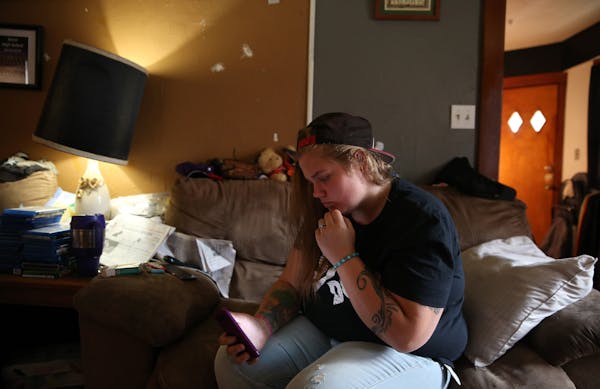Just over a year ago, the Hennepin County Sheriff's Office became the first law enforcement agency in Minnesota to have its deputies carry the drug naloxone, which can reverse the fatal overdose effects of heroin.
The decision to lead the state in this effort was a no-brainer, said Sheriff Rich Stanek. In 2008, there were six overdose deaths related to heroin use in the county; four years later, that number had climbed to 56.
Stanek worked to create a law allowing police officers to carry naloxone, and since then at least a half dozen metro-area law enforcement agencies have agreed to use the drug.
Before the law change, only paramedics could administer the drug. Naloxone can now be given to patients by squirting a mist into their nose.
"If you told me a decade ago that deputies would have a tourniquet or other lifesaving equipment in squad cars, I wouldn't have believed it," Stanek said. "Carrying naloxone is the right thing to do."
This week, the National Sheriffs' Association and Purdue Pharma announced a $350,000 grant to train officers in how to use naloxone. Stanek said no law enforcement agency should argue that having such a valuable tool is cost prohibitive; training is relatively inexpensive and each dose of naloxone is about $40, he said.
In February, Deputy Sheri Bukkila and a Corcoran police officer saved an overdose victim with naloxone. It was the sheriff's office first success story.
One problem for officers carrying naloxone is that the drug must be kept at room temperature, and most squads are heated all the way through, said Stanek. Some police chiefs contend that their counties have excellent ambulance service that reaches victims quicker. "But bad weather will slow down any vehicle," he said.
The number of states that have enacted "rescue drug" laws, allowing broader access to naloxone, has doubled since 2013. Such laws enable medical professionals and first responders to administer the drug without fear of legal repercussions.
According to the Centers for Disease Control and Prevention, 44 people in the U.S. die each day from overdose of prescription painkillers, not just heroin. Many of these tragedies could be prevented with the administration of naloxone, said National Sheriffs' Association Executive Director Jonathan Thompson.
"As first responders and leaders within our community, we must equip law enforcement with all the tools necessary to combat this epidemic," he said.
Brooklyn Center has seen a significant reduction in heroin overdoses, saving seven lives in the last year. Each of the department's 49 officers were trained in only two hours for a total cost of $400, said Cmdr. Rick Gabler.
"I think once other law enforcement agencies see success, they will move in the direction of using naloxone," he said.
David Chanen • 612-673-4465

'He was about community:' Scores memorialize north Minneapolis entrepreneur Sammy McDowell
Deadly shove at assisted-living center in Hugo investigated as homicide

Lack of volunteers forcing longtime Braille service to close
Two stalled Duluth housing projects move ahead

